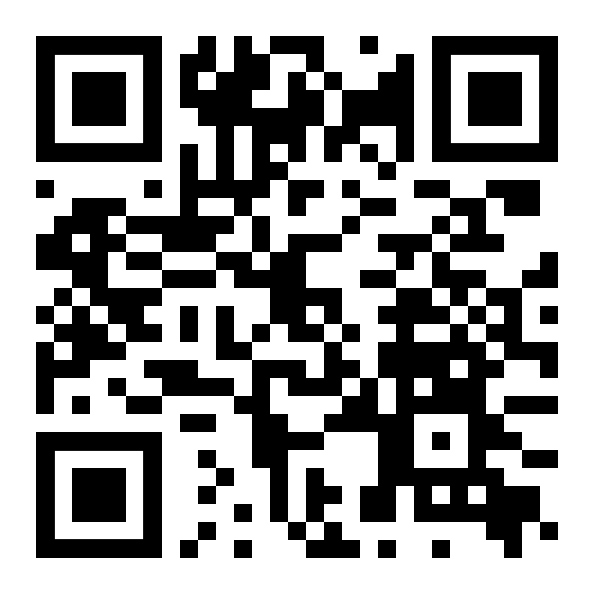In this article, you will get to know how to trade with a forex currency strength meter, how to create an effective currency strength meter, how to avoid widespread mistakes during using a currency strength meter, and much more. In addition, you will find out how to use the information provided by the indicators properly.
The concept of currency pairs is what makes the forex market different from other financial markets. This is where we talk about buying or selling one currency at the price of another. Every pair has such a structure where one currency plays the role of money, and the other is more about being a commodity product. All these trading operations are possible because of the strengthening of one currency and the weakening of another, allowing traders to profit from fluctuations in rates. Every trader is exposed to two different currencies and this is where the interesting part begins; a lot of gainful opportunities with the availability of measuring the strength of one currency against another one. A currency strength meter provides valuable information for making risk-averse trading decisions.
Every trader is exposed to two different currencies and this is where the interesting part begins; a lot of gainful opportunities with the availability of measuring the strength of one currency against another one.
What is the Currency Strength Meter?
As a trader, you need to know what currency is strengthening or weakening to reach gainful trading opportunities. Here comes a helpful visual guide called currency strength meter, which is usually used on such trading platforms as MT4, MT5, or any others that support custom tools. For creating accurate and composite data, this tool’s indicators use the exchange rates of different currency pairs available for buying and selling. You already know about technical indicators demonstrating the current market situation, so they are more about telling you when you should make a move. When it comes to the currency strength meter, traders can easily find out what currencies are worthy of paying attention to.
For example, the currency strength meter measures the power of all currency pairs with the US dollar to define the strength of the US dollar and then brings those measurements together to define the value for the US dollar.
One of the standard market situations is when there is a strong currency that may continue to rise tomorrow and a weak currency that may continue to fall tomorrow. How can we come to the money-making decision here? If there is a possibility of matching the strong currency with the weak one, traders can have one more complete trading strategy added to their collection by using this approach.
Let’s imagine that the British pound is rising against all other majors (major currencies) and the US dollar is falling against other currencies, so a forex trader will probably consider buying the GBP/USD currency pair and gain profit from the rising base currency (British pound) and the falling quote currency (US dollar).
There is no need for a currency to rise or fall against all other currencies available in the market to be considered as a strong or weak one. If a currency rises against major currencies, it’s more than enough to describe it as a strong currency. Likewise, if it falls against majors, it still can be considered as a weak one. Thus, there is an opportunity for a trader to match these currencies for conducting trading operations with pretty good chances of closing them with profit.
How Does It Work?
The thing you should definitely remember about working with this tool is that timeframe matters. One and the same currency can be strong and weak on different timeframes (starting from one minute to one month). So, it’s crucial to consider the timeframe you’re trading at when you choose the currency. For example, the strength of the Canadian dollar may be pretty high on today’s timeframe, but in case of the monthly analysis, it can be among the weakest currencies in the list. The forex currency strength meter is considered to be helpful with these small daily steps for opening short positions, but it’s usually better to widen your trading opportunities and go for longer trades.
You see, trading decisions made on the higher timeframes like W (one week) or MN (one month) can be more accurate and defining. You should remember that there is always some kind of news that can lead to certain instability and disorient traders in their moves by causing this temporary disruption. Yes, the keyword here is “temporary.” The point is that it’s better to widen your perspective as there are a lot of factors that can seriously damage a currency’s strength on a lower timeframe, while the higher timeframes will bring balance to the decision-making process.
If you want to avoid confusion, it’s advisable to stick to a specific timeframe that meets your trading requirements and aligns with your style. Short-term day traders conduct their operations using 30-minute and 1-hour timeframes, while those who stand for longer-term trading activities consider the daily timeframe more useful. But still, there aren’t more or less profitable timeframes for trading. It always depends on your strategy and workload (if trading isn’t the only source of income).
Never start trading two currencies that are strong or weak at the same time.
Let’s say some currencies are marked in green which indicates that they’re strong ones, so the right thing to do here is to choose the one that is marked in red, indicating the weakness of that currency. Thus the trader has a match of the strong currency (green) with the weak one (red), which leads to buying the green currency and selling the red one when the market signals the retracement of the trend or breakout.

Most strength meters provide their own measuring system. In most cases, it turns out that there is a 0-10 strength measurement, so the closer the number is to 10, the stronger the certain currency is. There is also a possibility that the number is below 1.
Most beginners consider CSM as the main solution and ignore the importance of technical analysis. Everything that comes to the defining of your trading moves is interdependent. This tool can show you the right way in case you integrate it with other indicators and analysis according to your strategy since this market is highly volatile and the situation can change in a split second. Consider CSM as the foundation of your analysis, as something you can start your trading with. It just helps you with filtering the currencies that are worth being analyzed according to the selected timeframe. Once you define the preferred currencies, there is a chart and market analysis that determines whether they’re worth being traded.
The point is that it’s better to widen your perspective as there are many factors that can seriously damage a currency’s strength on a lower timeframe, while the higher timeframes will bring balance to the decision-making process.
There are more advanced meters available that strongly base their currency strength analysis on economic performance and fundamental data in their formula: hundreds of economic reviews from different economies are analyzed, applying a more sophisticated algorithm to identify the strength of the currencies based on potential economic growth or recession. From this perspective, they provide traders with information based not just on past market conditions but also open the door to the current and future trends that might influence global market direction. This approach fundamentally increases the odds of profitable trading moves – there is no room for failure, and it saves traders a significant amount of time.
Strong vs. Weak Currencies
Knowing which currency is weak or strong is crucial since it defines the profitability of your trading activity. Like other financial instruments, currencies like to trend depending on the state of the market.
There are some countries that have strong currencies even when the world economy is unstable because of political issues, environmental changes, public disturbance, global pandemic, etc. Those countries are also called “safe havens” because of being economically and politically stable, so the same situation is with their currencies that are more likely to “keep afloat” during rough times.
The US is considered to be a country that can decently withstand global turbulence, so it’s one of the first countries in the list being called a “safe haven”; thus, its currency is a strong one and less risky to be traded. Talking about the above-mentioned tool, we clearly understand that weak currencies are as valuable as strong ones and can lead you to the desired top in case you do your homework and analyze the market from A to Z to be on top of things.
How to Create a Currency Strength Meter that Works (and Without Coding)
The forex Strength Meter is a technical indicator based on the algorithm helping traders specify the strength of an individual currency. This financial tool is used on MT4 and MT5 or other platforms supporting custom indicators. In addition, you can find a Currency Strength Meter app on the web.
Due to this indicator, a trader can find out which currency is performing strongly for the determined period of time and which one is performing weakly. This allows traders to develop their trading strategies by using this data for the charts on their MT4 screens.
For instance, the USD is rated as a strong currency at this moment, and the EUR is rated as weak. In this case, traders should trade these currencies in pair.
Forex strength meter guide doesn’t help traders navigate through the volatility.
Professional traders advise using the FX strength meter as an additional confirmation. Initially, a trader specifies advantages and disadvantages. After that, a trader can understand whether a trade is good or bad according to the trade.
Top Mistakes of Using Currency Strength Meter
During trading, beginners can make mistakes while using the currency strength meter.
Mistake #1
Beginners randomly use a currency strength meter without knowing how it works.
A currency strength meter uses a formula that identifies whether a currency is strong or weak. But if a trader doesn’t know how this formula works how can they trust the result? The currency strength meter can work on the daily time frame only. Therefore, no matter what tools or indicators you apply, you need to understand the principles of their work.
Mistake #2
The second widespread mistake is that beginners use a currency strength meter to determine the time of opening a deal. In other words, traders trade according to the currency strength meter without analyzing. For instance, a trader determines what the strongest currency pair is and immediately purchases while predicting the further rise of the price. This is a big mistake.
A currency strength meter helps you identify the strongest/weakest currencies at a point in time but doesn’t provide you with a signal to place an order.
Mistake #3
The lower time frame is prone to false signals. The majority of current strength meters count the change in price to specify which currencies are strong or weak. But this is prone to false signals on the lower time frame.
This can occur because important news can cause a “spike” in the price which can identify the strength/weakness of the currency pair improperly.
How to Tweak the Currency Strength Meter for Your Own Trading Strategy
If you don’t trust the currency strength meters in the industry, you can adjust the currency strength meter for your own trading strategy. All currency strength meters usually calculate price changes within a determined time frame and apply them to identify the weakest and strongest currency pairs. You have an opportunity to adjust the currency strength meter while adding more formulas and weighting.
To adjust the currency strength meter, you need to follow the next steps:
- Initially, you need to generate a list of major currency pairs.
- You need to calcolate the changes in percentage during the last 15 weeks. To reach this, you need to insert the rate of change (ROC) indicator into the weekly time frame and change its settings to a 15-week period.
- At the end, you need to rank the currencies from the strongest to the weakest ones. You need to place the pair that has reached the highest price right at the top followed by the currency pair that has reached the next highest price.
How to Use a Currency Strength Meter and Find the Best Currency Pairs to Ride Massive Trends
In order to find the best currency pairs to ride massive trends, you need to match the strongest currency pair with the weakest one. As a result, you get a strong trending market. You need to understand that a currency strength meter doesn’t allow you to time your entries. It just helps traders identify the best currency pairs to trade. Therefore, you need a trading setup to place a trade.
How to use a Currency Strength Meter and Find the Best Currency Pairs for Swing Trading
If a trader practices swing trading, they want the market to be either in a weak trend or range to capture a swing within it. Let’s consider how a currency strength meter can help with it. If you need to pair currency pairs that are strong or weak equally.
How do You Measure the Strength of a Currency
The strength of the national currency is measured as the purchasing power while purchasing products and services locally. It’s based on income and wages reports revealing the nominal earnings of the citizens.
The real income value can be calculated according to the inflation rate.
In the forex markets, the currency’s strength is measured relating to foreign currencies in the Foreign currency pairs. For instance, the EUR/USD currency pair contains the U.S. Dollar and the Euro, the two largest reserve currencies worldwide.
Tips on How to Use the Currency Meter
The use of the currency strength meter to enhance your trading is hard work. Currency correlations are constantly changing. You can’t predict the future behavior of the price according to its previous performance.
There are the most important tips on how to use the currency strength meter:
- Avoid entering with pairs that neutralize each other: you need to avoid going long on two pairs of currency moving in opposite directions. If you lose a profit on one of these trades, you will lose on the other one.
- Minimize risks: While investing in two pairs of currencies with a positive correlation, you have an opportunity to decrease your risks.
- Decrease losses: Simultaneously, you can decrease your losses while hedging two pairs of currencies with a negative correlation that is close to perfect. By using this strategy, you won’t be able to avoid losses at all, but you can minimize them.
Drawbacks of Currency Strength Meters
Despite all the benefits offered by the currency strength meters, this is not the best way to trade. Badly designed currency strength meters can work with a huge number of issues.
If you use a currency strength indicator that doesn’t provide you with the accurate strength value of the currency, you won’t be able to make a successful deal.
A badly designed currency strength indicator can cause freezing, memory leakage, wrong signals, stutters, the CPU constantly working at 100 percent.
Some currency strength indicators have in-built filters, including MACD, RSI, and moving averages. As a result, they generate wrong signals. While following these signals, traders can enter the wrong trades at the wrong time and lose their assets.
The most significant thing about indicators is that they won’t provide you with extensive information about the value of currencies. The best way to enter a trade is to use the information provided by currency strength meters and analyze how it fits in the larger picture.
In other words, each trader needs to understand that a currency strength meter is just a technical tool that can be used in your analysis besides other technical tools.
The best way to use indicators is either to confirm or to complete the data provided by them.
Key Takeaways for Using the Currency Strength Meter
The currency strength meter as a booster of your successful trades? Keep in mind that currency correlations are changing in accordance with world events, and it can be pretty fast. So, considering currency’s previous performance as the main tool to assess its correlations in the future is a losing game. Use this tool for defining valuable information that will help to find a strategy that meets your trading needs and minimizes the risk to which a lot of those who don’t use this tool are exposed.
- Never use random strength meters. Like any other tool, the currency strength meter is ruled by a formula that determines its strength/weakness. Unfortunately, there are a lot of such tools, the formulas of which are sub-standard and assess only technical features. In case the strength meter doesn’t cover fundamental criteria, the accuracy of its forecasting functionality can be considered insignificant.
- The free version of this tool provides results on all major currencies such as USD, EUR, GBP, JPY, CAD, CHF, NZD, and AUD. However, you can easily find the forex currency strength meter online. It includes exotic currencies such as the TRY, HUF, HKD, etc. An important thing you should definitely pay attention to is that the CSM tool provides the most accurate data with major currencies rather than exotics.
We should clearly understand that weak currencies are as valuable as strong ones and can lead you to the desired top in case you do your homework and analyze the market from A to Z to be on top of things.
- It’s important to understand that the strength meter is just a technical tool, nothing more. It has to be used together with a number of other tools and indicators. Consider this one as the confirmation or helpful complementation to the results you get from other trading indicators.
- The strength of a currency has to be calculated in contraposition to forex majors. Let’s put it this way, in order for GBP to be strong, it needs to be strong against the USD, EUR, JPY, CAD, CHF, NZD, and AUD. Yes, such a scenario indicates that the USD is also strong against those currencies that are not traded that much.
- Don’t forget about placing a stop-loss considering volatility. If you don’t calculate the average movement of price over the selected timeframe, there is a strong chance that your stop-loss order will take you out of a trade before it has had a chance to hit its limits.
- This tool has nothing to do with generating buy/sell signals. You should dive deeper before you make such a decision.
Conclusion
The Forex Strength Meter is a technical indicator based on the algorithm helping traders determine the strength of an individual currency. They are used on MT4 and MT5 or other platforms supporting custom indicators.
To use the Currency Strength Meter effectively, you need to avoid going long on two pairs of currency moving in opposite directions. You can minimize risks while investing in two pairs of currencies with a positive correlation. In addition, you can decrease your losses while hedging two pairs of currencies with a negative correlation that is close to perfect. By using this strategy, you won’t be able to avoid losses at all, but you can minimize them.
You need to understand that currency strength meters are not the final authority. By using information about prices provided indicators, you need to analyze and complete it because they are just technical tools.
FAQ
What is the best currency strength meter?
You can try using FinViz that offers free and premium tools and indicators that can greatly improve the trading results. You can also find other currency strength meters on the Internet, customize them to the MT4 and MT5 trading platforms and check which one is better.
Which currencies are strong right now?
To have a clear understanding of the strength of certain currencies, it’s recommended to use a currency strength meter (e.g., FinViz). The US dollar, the Canadian dollar, the Swiss franc, the euro, The British pound sterling, the Australian dollar, the New Zealand dollar, and the Singapore dollar are the strongest currencies in the world for now.
Is it better to have a strong or weak currency?
The currency is “strong” if it’s more valuable than the other currency, and its “weakness” means that it has fallen in value compared to another currency. A strong USD or a weak USD? – there is no right or wrong answer here since it all depends on your trading strategy. Making a profit is possible by trading both strong and weak currencies.
What is the world's weakest currency?
The Venezuelan Sovereign Bolívar is the weakest currency in the world.
What are the benefits of a weak currency?
It’s possible to make much bigger profits in short periods of time. Yet weak currency has more risks, which should be considered in the trading strategy.
How can I make my currency stronger?
The strengthening of a currency strongly depends on the factors you can’t influence (e.g., supply and demand in the forex market, country’s economic situation, interest rates of the central banks, etc.)



